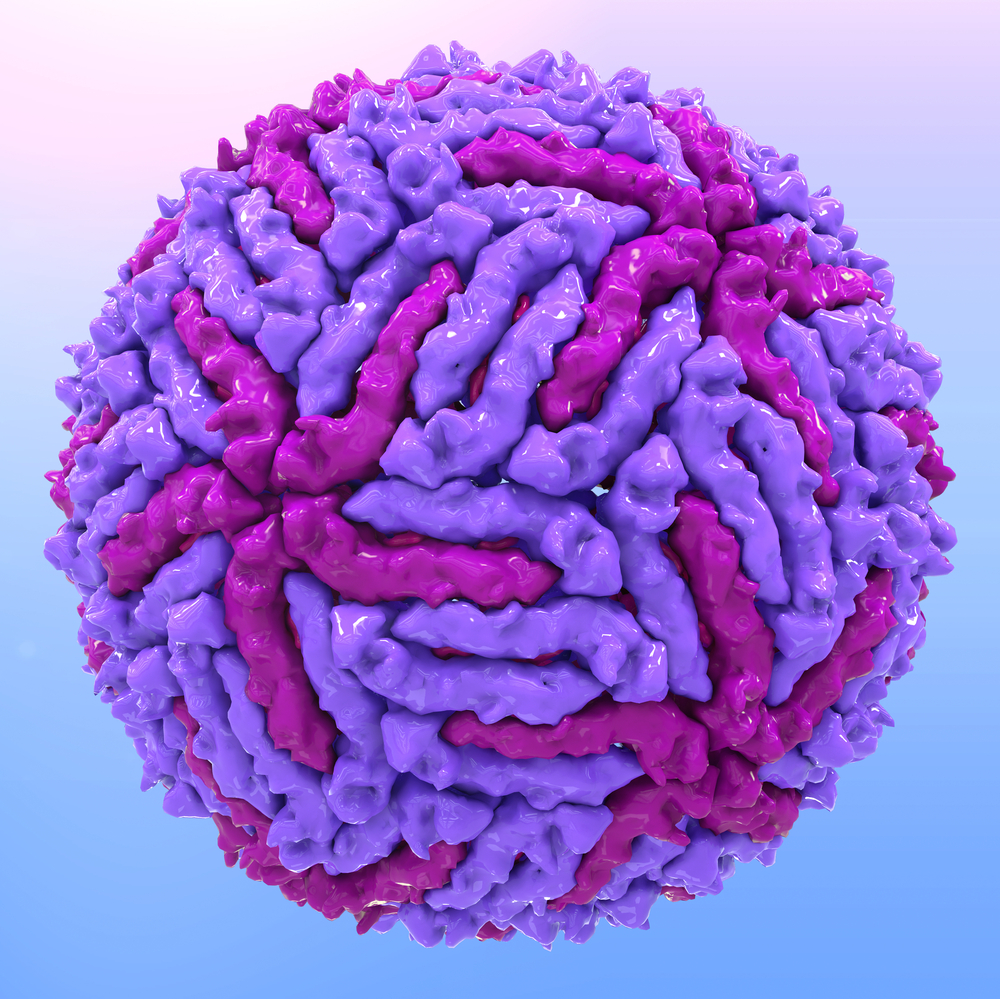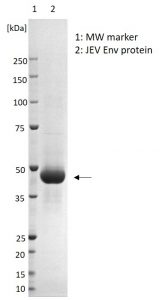JAPANESE ENCEPHALITIS VIRUS ENVELOPE PROTEIN
Recombinant JEV Envelope protein produced in HEK293 cells and purified from culture supernatant. Protein contains a C-terminal 6x His-tag. The NAC Japanese Encephalitis Virus Envelope protein has been manufactured in response to a need for a highly purified, concentrated protein for use in vaccine research and serological based diagnostic products. The antigen is in its native folding state, and possesses all post–translational modifications. This advanced approach results in a product which delivers optimal antigenicity due to its human origin.
PRODUCT DETAILS – JAPANESE ENCEPHALITIS VIRUS ENVELOPE PROTEIN
- Recombinant Japanese Encephalitis virus Envelope protein (strain SA-14, NCBI Accession Number: P27395.1) expressed from HEK293 cells.
- Includes amino acids 295-693 of the Wild-type Envelope protein and a C-terminal His-tag.
- Stored in DPBS pH 7.4. Greater than 95% purity by SDS-PAGE.
- Suitable for immunoassay development.
BACKGROUND
The Japanese encephalitis virus (JEV) is a flavivirus and is related to the West Nile Virus. JEV is the main cause of viral encephalitis in many countries of Asia with an estimated 68 000 clinical cases every year. Although symptomatic Japanese encephalitis (JE) is rare, the case-fatality rate among those with encephalitis can be as high as 30%. Permanent neurologic or psychiatric sequelae can occur in 30%–50% of those with encephalitis.
Flaviviruses are positive-stranded RNA viruses with a 9-12- kb genome that is translated as a single polyprotein and then cleaved by host and viral proteases into structural capsid (C), premembrane (prM), envelope (E) proteins and seven nonstructural proteins. Capsid binds to viral RNA to form a nucleocapsid that is enveloped by an endoplasmic reticulum-derived membrane containing E and prM. E proteins are responsible for cellular attachment and possess a hydrophobic loop that mediates fusion of viral and host membrane.The E protein is therefore the primary target of neutralizing antibodies.
REFERENCES
- Hunt et al. (2001). A recombinant particulate antigen of Japanese encephalitis virus produced in stably-transformed cells is an effective noninfectious antigen and subunit immunogen. Journal of Virological Methods. Volume 97, Issues 1–2, Pages 133-149.
- Japanese encephalitis. 2019. World Health Organisation (WHO).
- Konishi et al. (2001). Generation and Characterization of a Mammalian Cell Line Continuously Expressing Japanese Encephalitis Virus Subviral Particles. J Virol. 75(5): 2204–2212.
- Krol et al. (2019). Production and Biomedical Application of Flavivirus-like Particles. Trends in Biotechnology.
- Kümmerer B. The molecular biology of yellow fever virus. in: Kalitzky M. Borowski P. Molecular Biology of the Flavivirus. Horizon Bioscience, 2006: 1-16.


